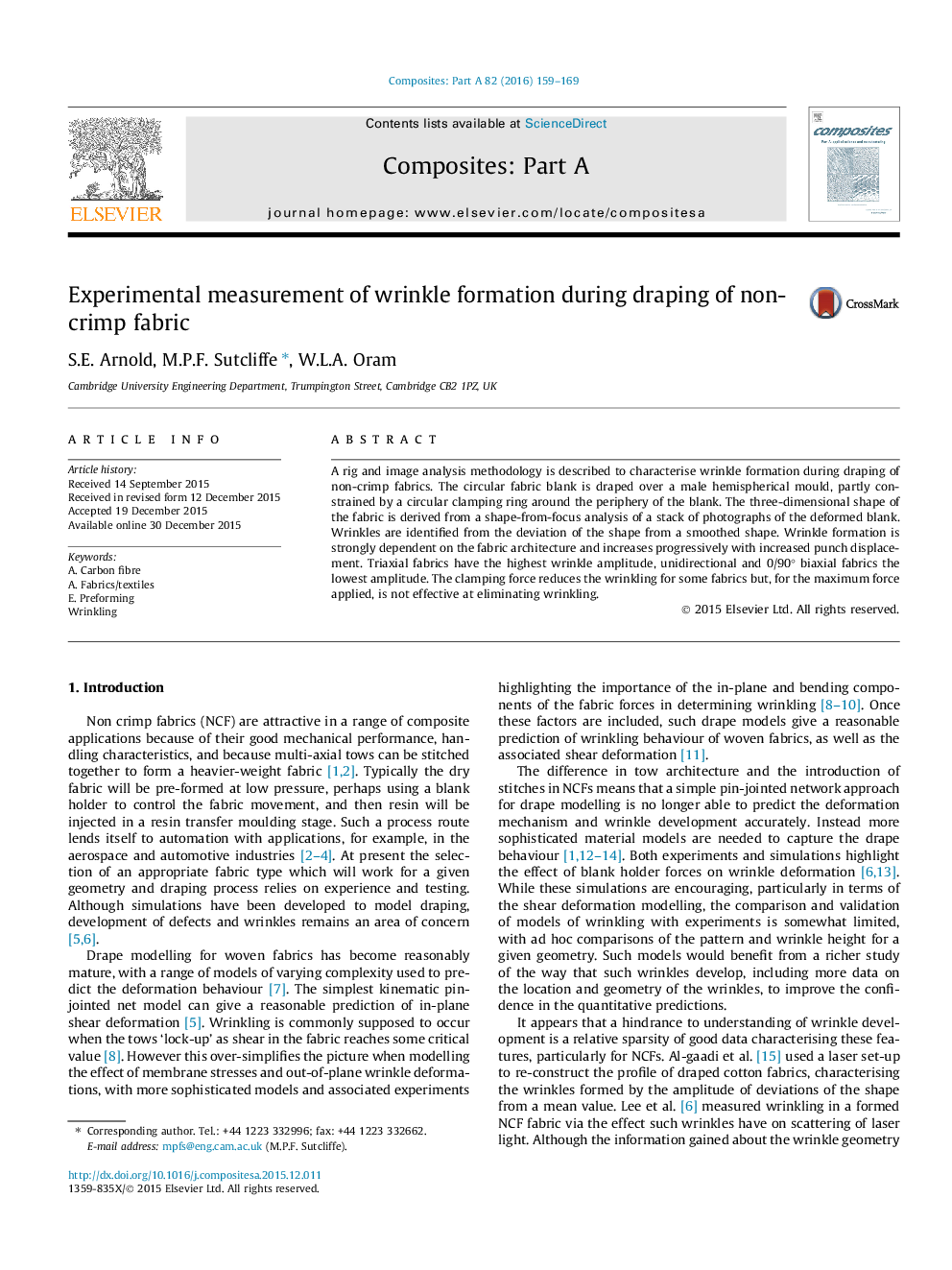| Article ID | Journal | Published Year | Pages | File Type |
|---|---|---|---|---|
| 7891251 | Composites Part A: Applied Science and Manufacturing | 2016 | 11 Pages |
Abstract
A rig and image analysis methodology is described to characterise wrinkle formation during draping of non-crimp fabrics. The circular fabric blank is draped over a male hemispherical mould, partly constrained by a circular clamping ring around the periphery of the blank. The three-dimensional shape of the fabric is derived from a shape-from-focus analysis of a stack of photographs of the deformed blank. Wrinkles are identified from the deviation of the shape from a smoothed shape. Wrinkle formation is strongly dependent on the fabric architecture and increases progressively with increased punch displacement. Triaxial fabrics have the highest wrinkle amplitude, unidirectional and 0/90° biaxial fabrics the lowest amplitude. The clamping force reduces the wrinkling for some fabrics but, for the maximum force applied, is not effective at eliminating wrinkling.
Related Topics
Physical Sciences and Engineering
Materials Science
Ceramics and Composites
Authors
S.E. Arnold, M.P.F. Sutcliffe, W.L.A. Oram,
